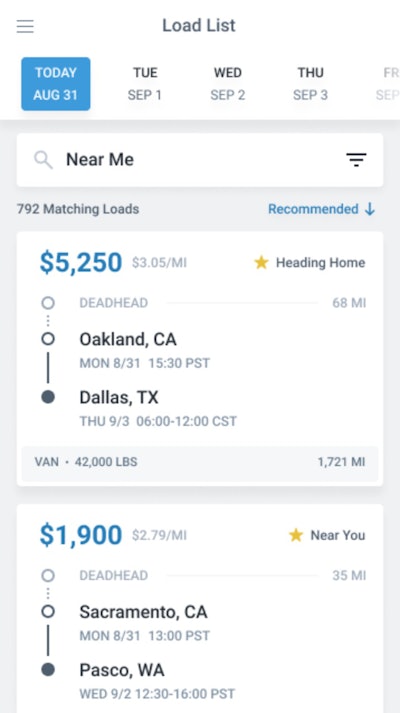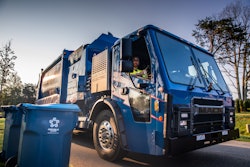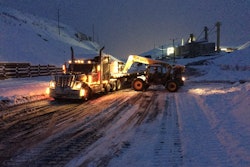Business automation tools have become more important for transportation companies to keep their operations, safety and back-office functions continuing in a virtual work environment. News and product announcements from technology suppliers during the week of Oct. 5 reflected this trend.
 Business automation and digital workflow tools have been in high demand in 2020.
Business automation and digital workflow tools have been in high demand in 2020.Transflo started the week by acquiring Ontario, Canada-based Microdea to broaden its digitized workflow capabilities for shippers, freight brokers, carriers, drivers and receivers. The combined business will operate under the Transflo brand and have a portfolio of mobile apps, telematics, electronic logging device (ELD) and business process automation systems that now include Microdea’s enterprise document management software, Synergize.
“The transaction is a strategic step in growing our footprint in the key Canadian supply chain sector and will drive additional efficiencies and solutions to the market today,” said Frank Adelman, chief executive officer for Transflo.
Transflo’s product suite also includes electronic bills of lading (EBOLs), electronic proof of delivery (EPOD), Velocity+ broker services, document scanning, freight visibility and truck navigation. Terms of the acquisition were not disclosed.
Platform Science, an Internet of Things (IoT) fleet management platform, became a Certified Integration partner with McLeod Software. With the two-way integration, fleets that use both McLeod’s LoadMaster enterprise platform and Platform Science have the ability to monitor hours of service and load visibility with real-time updates and driver-dispatch communications through workflow and messaging applications.
Drivers can use prefilled form fields in the Platform Science in-cab platform attached to each load, and dispatchers are connected to drivers within LoadMaster to send real-time messages.
The ELD mandate, not the COVID-19 pandemic, can be credited with pushing the industry toward digitization. More than a year ago, ELD and telematics provider KeepTruckin (KT) announced it was working on a freight-matching system. This week, it debuted a Smart Load Board that will be available free to users with KeepTruckin accounts.
 KeepTruckin has released a smart load board with free access to its current customers.
KeepTruckin has released a smart load board with free access to its current customers.Partnering in the launch are brokers ranging from Echo Global Logistics to Uber Freight, Edge Logistics, Bennett, Epes Logistics, Page Trucking, Keller Freight Solutions and Parade.
Fleets that use KT’s ELD product can opt in for location data sharing to help the system deliver recommendations. Freight-matching functions still work for those not using KT applications but will lack automated location-based search data.
Improving driver safety and satisfaction with cameras
Aside from digital workflow tools, perhaps no technology has been growing faster than cameras. Stewart Transport, a family-owned refrigerated carrier based in Phoenix, recently shared its experience with using the latest advancements in camera technology for its fleet of 150 trucks.
The company has been using camera systems in its vehicles for more than 10 years as the technology has evolved from flash cards to edge computing.
Stewart Transport now is using Netradyne’s DriverI that has edge computing to capture and analyze data to give drivers instant feedback and immediately upload relevant video to the portal. The system also has artificial intelligence that visually captures items that contribute to risky driving, such as stop signs, signals, pedestrians and speed-limit signs.
“Technology changes so fast, and we wanted to be two steps ahead in that regard,” said Amanda Gallegos, director of risk management for Stewart Transport. “The peripheral cameras and the depth of vision were impressive. And the real-time data was key — both the immediate access to video and the driver scoring.”
Having a better, faster defense against claims was the most notable result. Stewart Transport also had been experiencing thefts of tires and parts from its yard in Redlands, California. After putting DriverI cameras in two trucks that were parked in the yard, the fleet captured the video and sent it to the local police department, and they matched it to a suspect, Gallegos said.
“We never would have been able to do that with our former camera solution,” she said.
Stewart Transport also has found that exonerations helped with driver retention. “When a driver has a not-at-fault incident, we share it in our safety meetings, and it helps with the driver buy-in,” Gallegos said.
She admits that adding internal cameras was not an easy transition, but the fleet’s current turnover rate is at 40% with a goal of 25% or less. Before using cameras, its turnover was above 90%.












